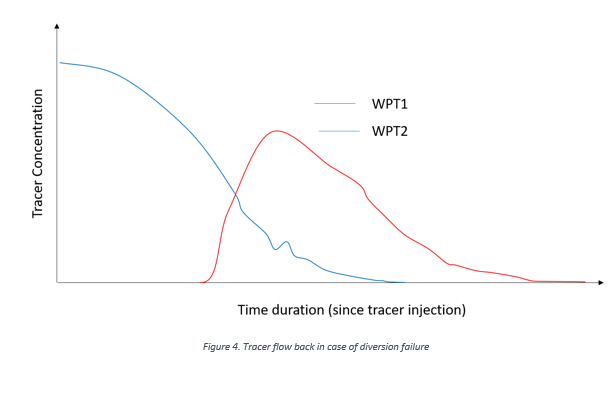By: Wei Tian and Alex Darnley
Introduction
In shale plays and tight reservoirs, horizontal wells are hydraulically fractured with multiple stages and multiple perforation clusters to improve surface-area contact with the formation. It is desirable for every perforation cluster to take an equal volume of frac fluid and proppant during the treatment, but data shows that this is rarely the case. Cluster efficiency is highly variable along the wellbore due to several factors such as: inconsistent EHD (entrance hole diameter), perforation erosion, heterogeneous mechanical rock properties, and stress shadowing. These variabilities along the wellbore cause injected frac fluid to enter the “path of least resistance” i.e. the perf clusters with this highest injectivity, while leaving the remaining perf clusters unstimulated. The problem is compounded further when preferential treatment of those clusters leads to further erosion of the perf cluster.
Nowadays, operators use diverting agents, or “diverters”, to address the issue of poor cluster efficiency. Diverters are typically pumped half-way through the fracturing treatment to divert frac fluid and proppant from one set of clusters to the other, allowing poorly treated clusters to take a larger portion of the fracturing treatment.
Completions engineers must determine whether the chance of generating increased cluster efficiency by injecting diverters is worth the added expense of the chemical diverter itself. To help diagnose the success of a diverter treatment, ResMetrics has developed a novel chemical tracer method to determine the success of diverter injection. This method requires minimal interruptions to operations, and no logging run is required (such as logging for radioactive tracers). Tracer flow back data alone will reveal if the diverting design is effective.
How It Works
After receiving the pump schedule from the completions engineer, two unique water phase tracers (WPTs) are selected to trace the frac fluid within the fracture stage. The first tracer is used to tag the frac fluid volume before the diverter drop, whereas the second tracer is used to tag the frac fluid after the diverter drop.
Operationally, injecting two tracers during during the same fracture stage is relatively simple. ResMetrics has developed a tracer injection pump that can inject multiple tracers within the same stage. After diverters have been dropped downhole, injection of the first tracer is stopped, and the pump immediately switches over to the second tracer.
Success vs. Failure
The success or failure of the diverter treatment will be represented in the tracer flowback profile of the two tracers that were pumped (pre and post diverter). If fluid and proppant are successfully diverted into new clusters that had previously been untreated, the tracer will be deposited according to Figure 1. This image shows that the tracers are occupying different discrete fractures of the treatment.

WPT1 (first tracer) and WPT2 (second tracer) will be produced simultaneously as shown in Figure 2 below. Analyzing the difference in tracer flow back concentration will yield the ratio of water inflow from the 1st segment of clusters to the water inflow from 2nd segment. Furthermore, load fluid cleanup efficiency for the first and second segments of treatment can be calculated respectively by applying material balance since the total injected tracer mass is known.

If the diversion fails to prevent the fracturing fluid from entering the first segment of clusters, fluid traced by WPT2 will push the fluid traced by WPT1 further into the fracture (Figure 3). During the production period, WPT2 will flow back earlier than WPT1. This is illustrated in Figure 4. The cleanup efficiency of the load fluid before and after the diverter drop can be calculated. However, in this scenario, it is not feasible to evaluate the inflow contribution from different segments of clusters.

